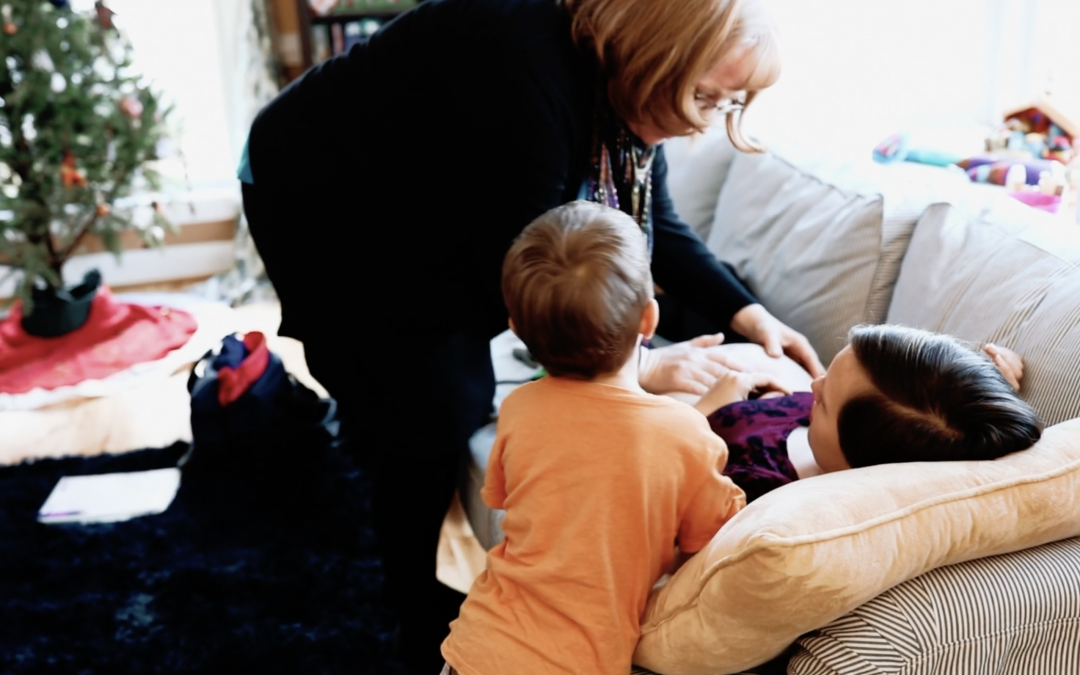A very long time ago I envisioned myself being a care provider like Dr. Quinn: Medicine Woman. I was absolutely entranced that she provided care for people in her community and balanced it with her family. She was driven to do research, she struggled with cultural and social roles and expectations, and had a strong moral imperative to help people. She worked hard to understand the needs of groups that were “othered” in her community.
While my path to becoming a provider has been circuitous, it is delightful that my care model is the one that is MOST like Dr. Quinn’s model. Homebirth midwifery offers me the beauty of caring for people in my community, bringing care to them, and balancing it (mostly) with my family.
My Path To Midwifery
Began with my first midwifery appointment in my second pregnancy. I spent most of the appointment times asking my midwives questions about their education. While I chose to take some years to be primary care provider and breastfeeding mama to my children as infants and toddlers, I worked hard to continue to educate myself about birth and breastfeeding.
As the librarian for my LLL Group, and since I had the books, I read all the books related to birth. I found other books in the public libraries, borrowed from friends and anywhere I could find books about birth and breastfeeding. I became a LLL Leader in 2004, and volunteered in that capacity in two states until 2011.
When my youngest was a toddler, I began attending home births in early 2011 with Peggy Franklin, CPM and Kim Pekin, CPM in their homebirth practice, Birth By Design, after attending clinical prenatal and postpartum visits for several months. In July 2011 they opened NOVA Natural Birth Center, and I assisted at the first birth center birth in the Beach Room. I have had the privilege of continuing to work with this practice throughout my training, including the addition of two more midwives, Mayanne Zielinski, CPM and Kelly Jenkins, CPM. It has been my privilege to work with these midwives and gain many insights from their different ways of practicing.
Education
My didactic (book) midwifery learning was primarily through participating in the inaugural class of Virginia School of Traditional Midwifery, as well as much self-study. Midwifery is a process of continual education. I have gone to a midwifery or obstetrical conference most years since I was a student, as well as attended area trainings, seminars, online webinars, and workshops of all types to help remain abreast of current health care trends and improving my skills through knowledge and repetition and review.
Experience
In November, 2016, I was awarded the Midwifery Bridge Certificate, which is described as completion of a minimum of 50 accredited CEUs on the topics of emergency skills in pregnancy, birth and postpartum; newborn care, and miscellaneous midwifery topics. The North American Registry of Midwives, the credentialing organization for CPMs, developed the Bridge Certificate in 2013/2014 to close any real or perceived gaps in portfolio/apprenticeship-based midwifery education, and answers concerns to non-accredited CPM education by ACOG and ACNM. It meets the standards for the International Confederation of Midwives. Advanced training taken for this certificate includes: Advanced Life Support in Obstetrics, Expecting the Unexpected: On-site Retreat in maternal and newborn Emergency Skills (4 days seminar through Mercy in Action); and breech-focused training with Anke Reitter, MD (Germany); Jane Evans, registered midwife in the UK; and Dennis Hartung, MD and Stuart Fischbein, MD (both USA), world renowned experts in upright breech birth.
My other life experience includes having received my undergraduate degree as a BA from University of Southern California in Biology and Russian. I worked as a cardiology technologist in a hospital setting for 5 years (1996-2000). And finally, I have five children, four of whom were born with midwives, and the last two were born at home in my kitchen, with a CPM, licensed midwife, like I am now.

